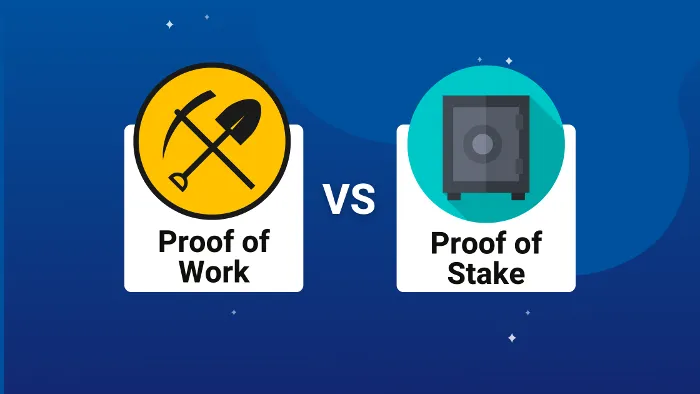Exploring the Blockchain Conundrum: Proof of Work vs. Proof of Stake

Introduction
In the fast-evolving world of blockchain and cryptocurrencies, the debate over consensus algorithms is a central and ongoing discussion. Two prominent contenders in this arena are Proof of Work (PoW) and Proof of Stake (PoS). Each has its strengths and weaknesses, sparking debates within the blockchain community about which is the superior model. In this blog post, we'll delve into the intricacies of PoW and PoS, exploring their mechanisms, advantages, and drawbacks.
Proof of Work: The Pioneer
Proof of Work is the original consensus algorithm, famously associated with Bitcoin. In a PoW system, miners compete to solve complex mathematical problems, with the first to find a solution being rewarded with the opportunity to add a new block to the blockchain. The algorithm's security relies on the computational power required to solve these problems, making it resource-intensive and energy-consuming.
Advantages of Proof of Work:
Decentralization: PoW has been proven to provide a high level of decentralization, preventing any single entity from gaining control over the network.
Security: The computational complexity of PoW makes it highly secure against various types of attacks, as altering past transactions would require an impractical amount of computational power.
Proven Track Record: Bitcoin, the pioneer of PoW, has demonstrated the effectiveness and resilience of this consensus mechanism over more than a decade.
Drawbacks of Proof of Work:
Energy Consumption: One of the most significant criticisms of PoW is its energy consumption. The process of solving complex mathematical problems requires a substantial amount of computational power, contributing to environmental concerns.
Centralization Risks: While PoW is designed to be decentralized, the concentration of mining power in specific regions or in the hands of a few large mining pools is a potential risk.
Proof of Stake: A Sustainable Alternative?
In contrast to PoW, Proof of Stake operates on the principle of validators being chosen to create new blocks based on the amount of cryptocurrency they "stake" or lock up as collateral. This eliminates the need for resource-intensive mining, significantly reducing energy consumption.
Advantages of Proof of Stake:
Energy Efficiency: PoS is celebrated for its energy efficiency, as it doesn't require the massive computational power that PoW does. This makes it a more environmentally friendly option.
Lower Entry Barriers: PoS often has lower entry barriers for participants, as it doesn't demand expensive hardware or high electricity costs. This can contribute to a more inclusive network.
Security Measures: PoS introduces economic incentives to discourage malicious behavior, with validators risking their staked assets if they act against the network's best interests.
Drawbacks of Proof of Stake:
Potential Centralization: Critics argue that PoS can lead to centralization, as wealthier participants have more significant influence over the network. This concentration of power could undermine the principles of decentralization.
Initial Distribution Challenges: The distribution of initial stake can be a challenge, as early adopters or those with large sums of the cryptocurrency may gain disproportionate control.
Conclusion
The debate between Proof of Work and Proof of Stake is ongoing, with each having its unique set of advantages and drawbacks. While PoW has proven its effectiveness over the years, the environmental concerns associated with its energy consumption have led many to explore PoS as a more sustainable alternative. As the blockchain space continues to evolve, it's likely that new consensus mechanisms will emerge, further enriching the conversation about the future of decentralized networks. Ultimately, the choice between PoW and PoS depends on the specific goals and values of the blockchain community, and it will be fascinating to witness how this debate unfolds in the years to come.
